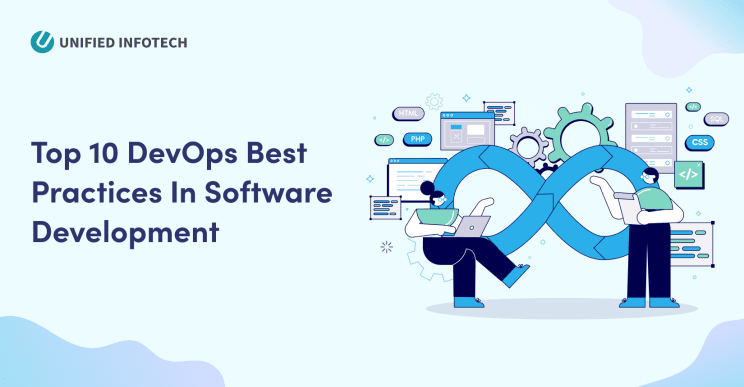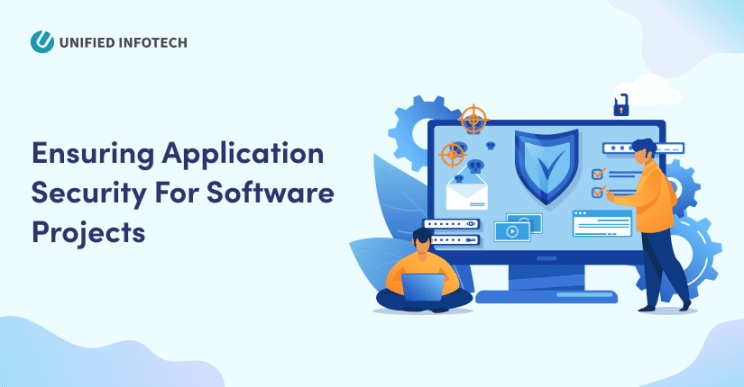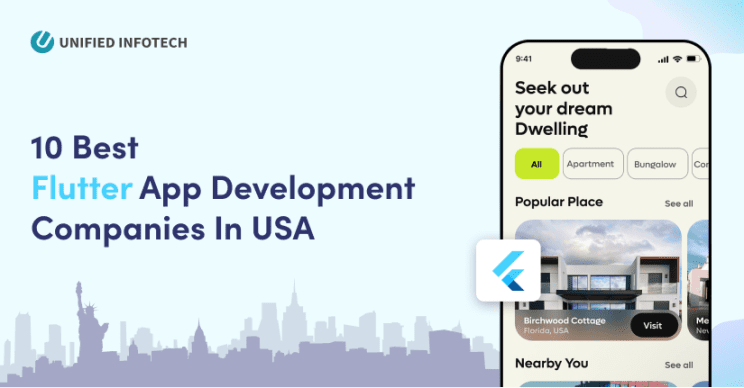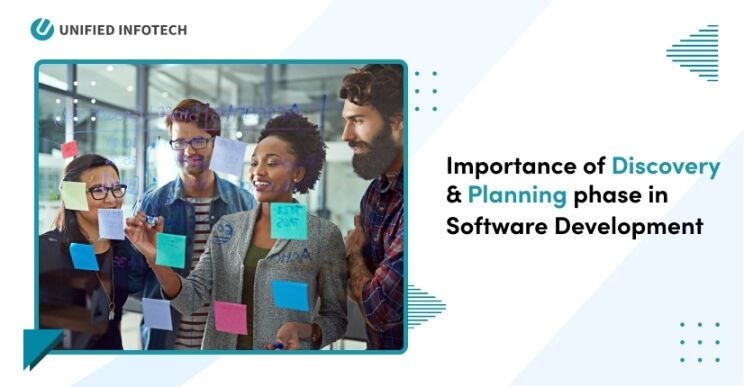What do you think of when you hear the word Healthcare??
Is it a doctor’s cross? Maybe men and women wearing white lab coats with stethoscopes around their neck? Or maybe a mobile app?
Don’t be baffled when we relate mobile apps to healthcare. Medical mobile apps are a growing trend in the market right now. In fact, many medicine manufacturers, and hospitals are making use of these apps, enhancing the quality of medical treatment.
The advent of mobile apps is slowly shifting the focus of the healthcare industry, turning it more patient-centric. One of the prevalent problems of healthcare industry is the lack of time and efficiency. With healthcare apps, this problem is being easily solved.
The popularity of Medical apps is rising among Android and iOS users. This makes it a great time for startups to enter the market with their own app idea. And that’s why we are going to talk about 8 simple steps to create a healthcare app.
The Steps To Develop Mobile Medical Apps
Here’s an in-brief view of the steps for a healthcare mobile app development.
- Validate the idea with market analysis
- Choosing the right app type
- Finalize the different sides of your application
- Designing a medical app
- All the necessary features
- Tech stack you need to know about
- Legal regulations to keep up with
- Monetizing your app
And now we are ready to go into details about how to develop a healthcare app.
1. Is Your Healthcare Mobile App Development Idea Valid?
The first step to developing a healthcare application is analyzing the health app market for idea validation. You shouldn’t be starting with development without validating your idea first. So what does the market say about hospital management mobile apps?
a. Market overview
Here are a few important market views that’ll let you know how important healthcare applications are getting among iOS and Android-based medical app users.
- According to sources, the global healthcare application market, which was valued at 8.0 billion US dollars in 2018, is expected to value around 111 billion US dollars by 2025. The value is expected to increase at a CAGR of 38.26% between 2019 to 2025.
- According to a survey conducted among the healthcare app developers, connecting to the doctors is the most popular aspect for which they develop medical apps.
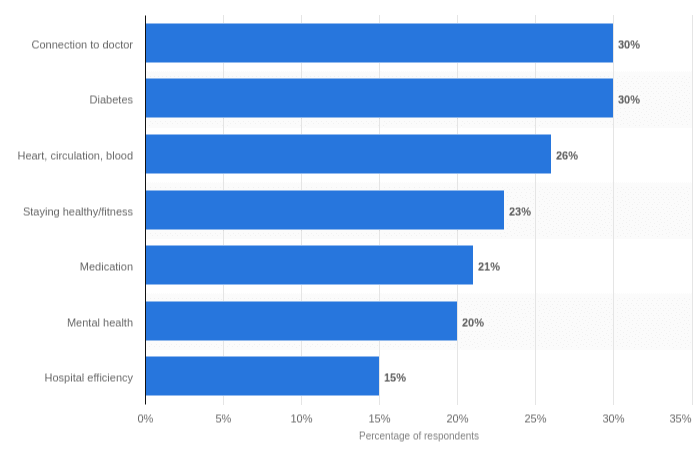
- The study conducted on the regional market valuation of healthcare app market reveals that North America dominated the healthcare application market in terms of revenue share.
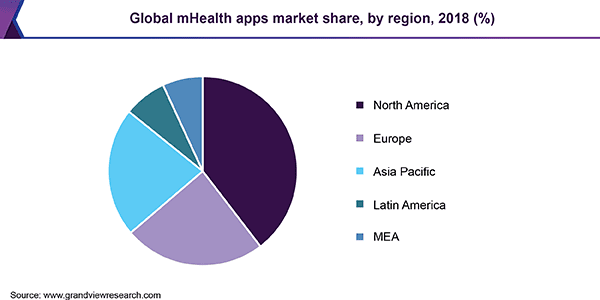
- A study conducted among the nurses of the Nursing Association of Barcelona revealed that about 48.35% of the respondents had healthcare apps installed on their smartphones. Along with that, 80% of revealed that these apps should be certified by health and professional institutes.
- Accenture’s study on Medical apps shows that 78% of all consumers are interested in receiving virtual healthcare services. However, right now only 21% of them have received services that way.
Your healthcare application development can only succeed if it solves a problem and right now there are many problems with the healthcare industry in the world. To validate your idea, make sure that your app solves at least one of these following problems –
b. Managing paperwork
There are still many clinics and hospitals that maintain records on paper. Managing this paperwork takes a lot of time, as it shows in the study about how nurses use their working hours. According to the study, nurses spend about 35.3% time in documentation. Which is a lot of time to spend on documentation.
c. Data management in healthcare mobile app development
Managing data in a disparate system is one of the many problems that plague the healthcare industry. The absence of a centralized system prevents doctors from providing proper medical care on time. It also prevents pharmaceutical workers from maintaining accurate records for medicine manufacturing and delivery.
d. Disconnected tech
The difference in the formulary, connectivity, communicatory and security protocols between various healthcare organizations creates an impossible to manage the environment.
e. Variation in process
Disconnected tech creates the problem of variation in the process between different organizations. The serious lack of integration forces the staff to create and adhere to their own process, creating a serious variation in the process and preventing the unification of the healthcare industry.
Once you are sure of your idea, you can move onto the next step of development- choosing the app type.
2. Choose The Right Healthcare Application Type
There are various problems related to the medical industry. As a result, there are different types of medical apps. And before starting with development, you have to choose the type of app you want to build. Here is a list of all types of professional medical apps in the market right now.
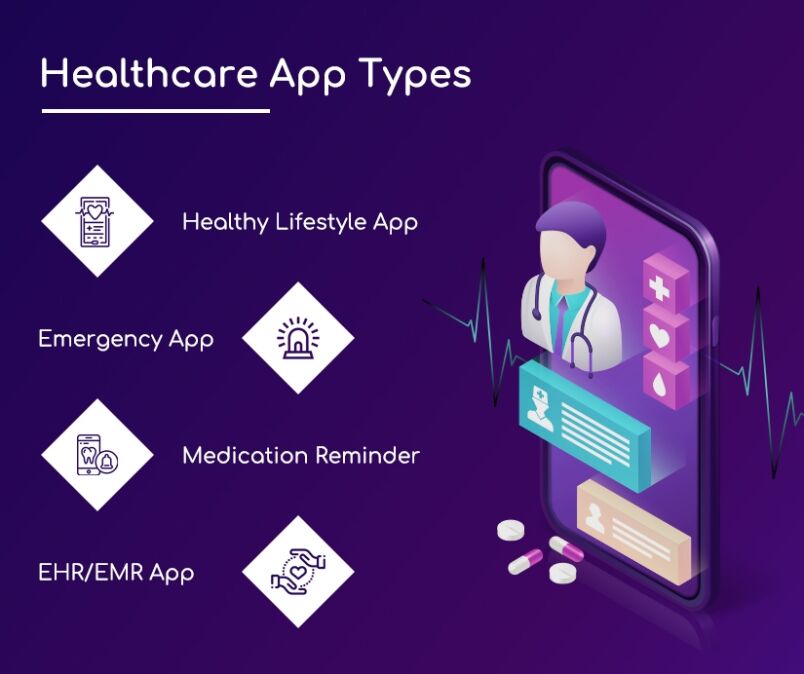
Remember that the kind of application you choose will have an impact on the kind of features you’ll need to integrate into the app.
a. Networking Apps For Healthcare Professionals
Networking apps for healthcare professionals work just like any other professional apps. These apps create a streamlined experience for doctors and nurses alike to connect with other professionals in the same field, interact with them and share news relevant to the healthcare industry easily.
b. Medical database apps
Medical database apps help professionals to store and access data easily. The types of data that can be stored and accessed through a medical database app may include –
- Patient’s details (illness, what treatment they are receiving, who is treating them what medicine they are being given)
- Medicine inventory details
- Doctor and nurse’s contact information
The database application helps the professionals access the right data at the right time, and edit it when required.
c. Clinical Assistance Apps
With clinical assistance applications, doctors can easily view laboratory results, the patient’s vital charts, symptoms and has access to all-round assistance all the time. These hospital management mobile apps continuously help the doctors to diagnose and treat the patients with accuracy.
d. Patient Health Tracking Apps
The patient health tracking apps help the doctors to keep track of a patient’s health even after they have left the hospital. These apps keep track of the patient’s vitals and help alert the doctors if the vitals drop below or go above the average. Perfect for patients of fluctuating blood pressure, diabetes, and many others, these apps can be a lifesaver if developed perfectly.
e. Doctor-on-demand apps
Patients don’t always have time to visit a doctor’s office and that’s where doctor-on-demand apps come in. Working as a virtual chamber, these apps help the patients and doctors to connect through video and audio calls, providing the patients with instant advice on how to deal with the health problems.
After choosing the type of application, you have to choose the features. Remember that the feature list will vary for different types of healthcare mobile app development. Here we are going to discuss some basic features required to create functional mobile medical apps for healthcare professionals. You can talk to your app development partner about app-specific features.
3. Different Sides of The Healthcare/Medical App
Every app has at least two sides of it, the admin panel, and the user app. The same applies to your healthcare application. To make a functional medicine health application you have to develop an admin panel and a user app.
a. The Admin Panel
The admin panel is like the brain of the application. Admin panel is used to manage every aspect of the application, from managing the list of doctors to the appointments booked on the application.
Without the admin panel, you won’t be able to completely manage the functionalities of the application. It is the web-based application that’ll help the authorized personnel to have control over the app and its functionalities.
b. The User App
The user application is the business end of the application. This is the part that will be used by healthcare professionals. During development, make sure that the app includes necessary features for the user.
It is incredibly important for the user app to be well designed and developed. It is the business end and it has to impress the users, help them perform the tasks smoothly and provide value to them.
4. Designing a Medical App: The Things to Consider
Designing mobile medical apps is a different thing altogether. Medical applications created for industry professionals need to follow some basic principles, which are-
a. The Principle Of Simplicity
Since it is designed mainly for the treatment of patients, medical applications need to have a simple, intuitive design. A healthcare application does not need any extra flashy design elements, added embellishments and effects. During the design process make sure there are no excess elements to the app. Create a straightforward design that helps the users to make the best of it.
b. The Principle Of Sensible Colors
It is best to choose sensible colors when designing a healthcare app. Most successful medical applications use sober colors in their designs. You should also consider the age group of the target audience. Choosing the right color palette helps you a lot in user retention.
c. The Principle Of Readability
Enhancing readability should be important for your medical app’s design. Using fancy fonts looks good, but makes the app hard to use. So choose an easy-to-read font style, and don’t use more than two styles in the app.
d. The Principle Of Responsive Design
Responsive design for mobile applications is a given these days, thanks to the wide range of devices being used by industry professionals these days. So make sure that the app is designed to fit any screen the user might be using.
5. Create The Feature List for Healthcare Mobile App Development
The secret of any well functioning app is the integrated features. And the same goes for healthcare apps for professionals.
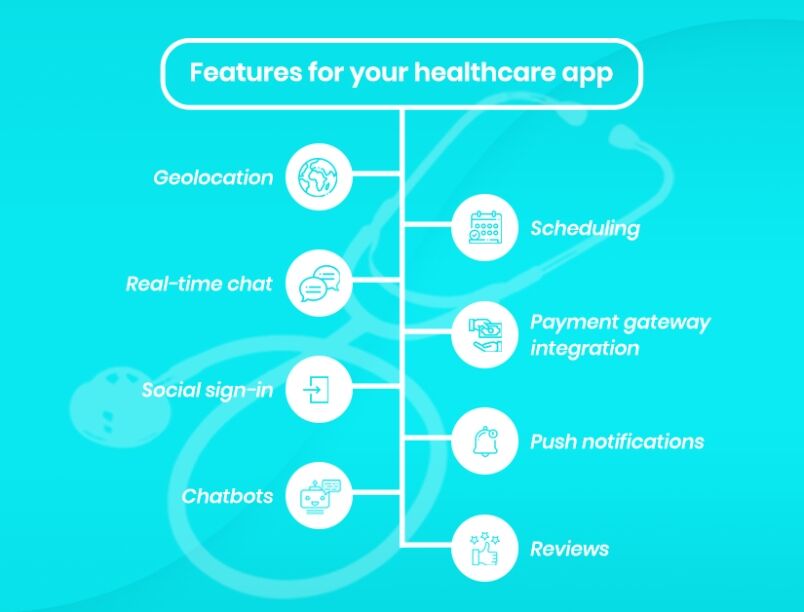
These hospital system apps need to be developed with integrated features that help the doctors and nurses to provide optimal healthcare to the patients.
a. Signup And Login
Sign up and login feature, just like any other application is important for medical app development. It helps healthcare professionals to create and maintain their personalized accounts and secure their details.

Make sure that the signup and login process is simple yet secure. Include the social media login feature as well. It will help the users sign in to the application without any problems.
b. Profile Management
Once the profile is created, the user can edit and manage their own profile with relevant details.
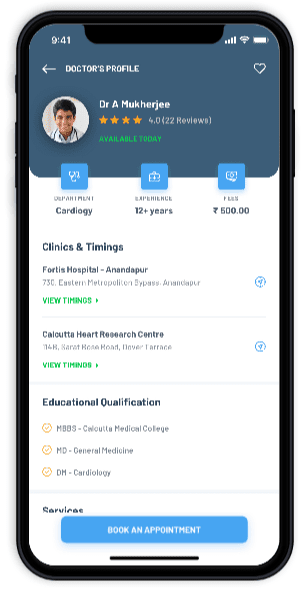
It is a basic but important feature for healthcare networking or Doctor-on-demand application. So don’t forget to include the profile creation and maintenance feature.
c. Access Medical Records
Data management is a major problem faced by the healthcare industry. That’s why your healthcare mobile app development needs a feature to store and access patient-related data easily whenever they need to.
d. Audio And Video Calling
For instantly connecting with doctors through the healthcare application, the users need an audio and video calling feature.
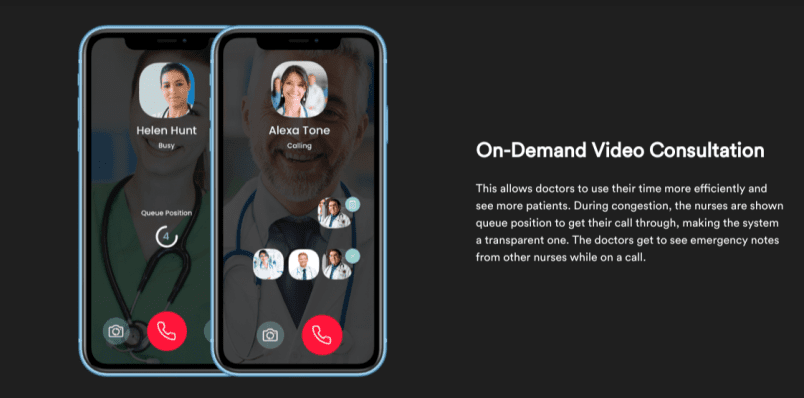
With on-demand video calling it will be easier for the users to connect with doctors and receive a consultation. It will work to fill the communication gap between healthcare professionals.
e. Access To Lab Results
Digital access to lab reports can help the professionals to provide a proper diagnosis without having to waste a lot of time waiting around for the hard copies of reports to deliver. The digital access to X-rays, MRI Scans, Blood-test results will speed up the process of medical treatment.
f. Tracking Medicine Inventory
Medicine inventory tracking is an important feature of your application. This helps healthcare organizations to keep track of their inventory and order medicines when they need to.
g. Track Patient’s Vitals
With this feature, the doctors and nurses will be able to track a patient’s vitals and respond quickly in an emergency. This way the patient tracking app helps the doctors to track the patient’s health and provide instant treatment.
6. Choose The Right Tech Stack
The tech stack of your patient care app depends a lot on the kind of features you decide on integrating in your application. We have provided with the basic tech stack needed to develop your medical app, for additional tech stack you should consult with your medical app developers.
| Front end development | Swift (iOS), Java (Android) React (web) |
| Database | Postgrace, MySQL, MongoDB |
| Additional | Twilio for notifications, Stripe, PayPal for online payment. |
7. Complying With Legal Regulations – Check Out The Country Rules
There are many security regulations you should consider before launching a healthcare application. The architecture of the application needs to be designed properly. And it must meet all the security and privacy regulations set by the governmental bodies.
The security and privacy regulations tend to vary with the different regions in the world. Make sure that the app follows the laws of different regions before launching. Here are some regulatory laws set by governmental bodies all around the world.
USA
To launch a medical application for the USA market that transmits Protected Health Information (PHI) of a patient must be in compliance with the Health Insurance Portability and Accountability Act (HIPAA). This act regulated how protected health information is sent back and forth between the servers and forces limitations on the access to individually identifiable healthcare information to the unauthorized personnel.
Your application will fall under HIPAA compliance if it contains PHI and it is shared by the covered organizations like hospitals. Any healthcare apps that don’t contain PHI falls under the Non-HIPAA category.
Canada
Canada sets out the parameters for the use of personal data through the Personal Information Protection and Electronic Documents Act. The act sets out privacy rules for the use of personal information for businesses, including medical apps. The Canadian government uses this act to regulate the use of personal data by businesses.
European Union
If you are looking to launch your medical app in Europe, you have to make sure that your app complies with the General Data Protection Regulation in effect since 2018 May. GDPR specifies how businesses can treat personal data and how they should protect it. The regulation applies to all EU citizens. Collecting and using medical data of the EU citizens makes the application subject of GDPR regulation. Under GDPR any data identifying username, password, photos, health records, etc are considered as personal data.
UK
In the UK you have to follow the Data Protection Act for patient care apps. It regulates and sets out the limits on the usage and storage of personal information. According to the law, the uses should be detailed in the privacy policy.
Asian regions
The data privacy laws vary greatly all over the Asia Pacific region. And to launch your mobile applications for the health sector you have to become familiar with them. The data protection laws change over time in this region. It seems to take a similar shape to the General Data Protection Regulation in use in the EU.
Out of all the variations, two laws stand out. Japan’s Personal Information Protection Act (PIPA), dating back to 2003, acts as the oldest law in this field. Singapore’s Personal Data Protection Act (PDPA) is extremely strict. It has some of the toughest penalties for those who misuse personal information of the users.
8. Revenue Models for Professional Healthcare App
There are many different ways for you to generate revenue with your professional medical app, and here are the most popular ones.
| Advertisements | The basic idea is to partner with the local and industry providers and advertise their products on your platform. Make sure that the advertisements are relevant to the healthcare industry. |
| Certified content | Providing a limited amount of certified blogs, articles, podcasts by the experts in the field. For more updated content regularly, the users would have to pay a charge. |
| Paid application | The users have to pay to install the app from the app store. |
| Freemium model | There are two types of app in this model, the free app with limited features and functionalities. And the paid version with better and premium features and functionalities. The users have to buy the premium version for better features. |
| Subscription model | This model works on the basis of the annual subscription model. The users have to pay on a regular interval to access the premium features. |
Wrapping up
Thanks to the worldwide trend of going digital, healthcare and medical apps are getting quite popular. Doctors are making use of these apps every day to streamline the treatment provided to the patients. this is the perfect time for you to start developing a professional medical app. And if you need help, then you can always message us! We are always happy to help.





